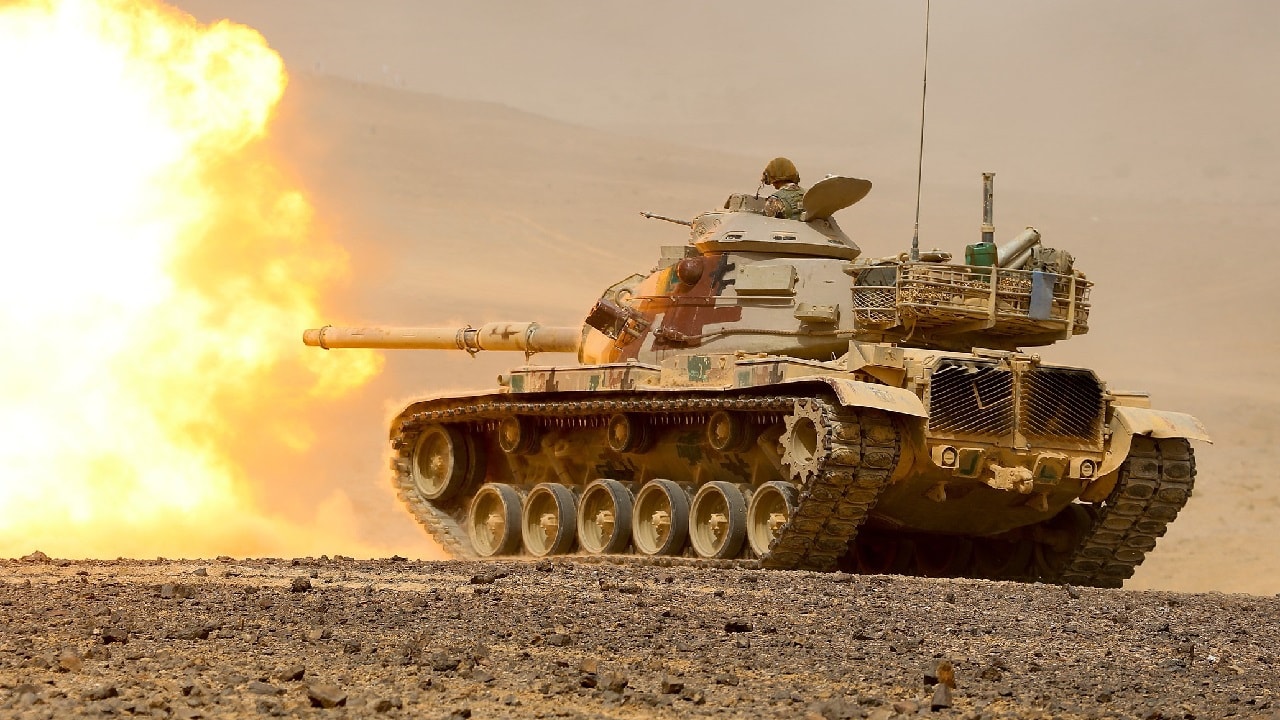The M60 Main Battle Tank Was Developed to Counter the Soviet Union’s Tanks – The American-built M60 is one of the most successful main battle tanks (MBTs) ever produced. More than 15,000 rolled off the production line, and since its introduction in 1959, the M60 has seen service in the armies of 22 nations. It was actually developed to counter the threat from the Soviet Union‘s medium tanks.
During its decades in service, the M60 underwent various updates – the first in 1963 when the M60A1 appeared with a larger and better-designed turret, improved armor and more efficient shock-absorbers.
Descendant of the Patton
Though the M60 was developed from the M48 Patton, the M60 tank series was never officially christened as a “Patton tank,” and the United States Army considered it a “product-improved descendant.” However, there were numerous design similarities and the M60 is often – albeit informally – grouped as a member of the Patton tank family. It was officially known as “105mm Gun Full Tracked Combat Tank (M60).”
Development of the tank began in 1957 to counter the threat posed by the Soviet Union’s T-54/T-55 medium tanks which were seen as superior in most aspects to the U.S. military’s M48 medium tanks. The first prototypes of the M60 were produced in 1958 and early 1959. It was clearly more of an evolutionary – rather than revolutionary – step forward.
The general turret shape of the M48 was initially retained, while it was progressively improved to the more well-known M60 version. The interior layout, which was based on the design of the M48, provided ample room for updates and improvements, extending the vehicle’s service life for over four decades. It was also determined that anti-tank weapons had outpaced armor development, and as a result, the importance of the World War II-era “ heavy tank” was diminishing.
Instead of focusing on light, medium and heavy tanks – the United States opted to develop a new tank that was well-armed, reasonably well armored, highly mobile and still affordable to build in large numbers. The M60 thus became the U.S. military’s first “Main Battle Tank,” and did away with the World War II classifications entirely. It was also categorized as a “first generation” MBT, and it would go on to see service throughout the Cold War.
Steadily upgraded, the U.S. Army only phased the M60A3 out of service in 1997, when it was finally superseded by the third-generation M1 Abrams MBT.
Key Specifications of the M60
The M60 incorporated a Continental V-12 559.7kW (750hp) air-cooled, twin-turbocharged diesel engine – the same as the upgraded M-48A3. Power was transmitted to a final drive through a cross drive transmission, a combined transmission, differential, steering and braking unit. Maximum speed was 30mph on the road, and it had a range of 311 miles.
The 51.8-ton tank had a crew of four, which included the commander, driver, gunner and loader. The M60 was the last U.S. MBT to utilize homogeneous steel armor, and it was the last tank to feature an escape hatch under the hull.
In 1963, the M60 was upgraded to the M60A1 standard – which featured a larger, improved-shaped turret and improvements to the armor protection and shock absorbers. The M60A1 was also equipped with a stabilization system for the main gun
Its main armament initially was the British-designed, license-produced 105mm (4.13) Royal Ordnance L7 tank gun, designated the M68 gun; but with the M60A2 version, the gun was upgrade to the 152mm caliber main gun similar to what was employed on the M551 Sheridan. The improved gun was able to fire the Shillelagh gun-launched anti-tank missile as well as normal rounds. The other significant update of the M60A2 model was the redesigned low-profile turret, which offered a commander’s machine-gun cupola on top – providing the commander of a good view and field of fire while protected.
The M60A3 version, which was introduced in the 1970s, incorporated a number of technological advances including an improved rangefinder and ballistic computer as well as a turret stabilization system. All American M60s were eventually upgraded to this standard.
Now a Senior Editor for 1945, Peter Suciu is a Michigan-based writer who has contributed to more than four dozen magazines, newspapers and websites. He regularly writes about military hardware, and is the author of several books on military headgear including A Gallery of Military Headdress, which is available on Amazon.com. Peter is also a Contributing Writer for Forbes.
Update: This piece has been updated since its original posting.

